State Service Commissions and Disaster Services

Case Studies Showcasing the Roles State Service Commissions Can Play in Disaster Preparation and Response



Case Studies Showcasing the Roles State Service Commissions Can Play in Disaster Preparation and Response

America's Service Commissions is a nonprofit, nonpartisan association representing and promoting the 52 state service commissions across the United States and territories with the mission to lead and elevate the state service network.
State service commissions are governor-appointed public agencies or nonprofit organizations made up of more than 1,000 commissioners, private citizens leading the nation's service movement and administering more than 75 percent of the federal AmeriCorps funds to address pressing community needs.
Photos included in this publication are courtesy of the AmeriCorps agency and state service commissions.

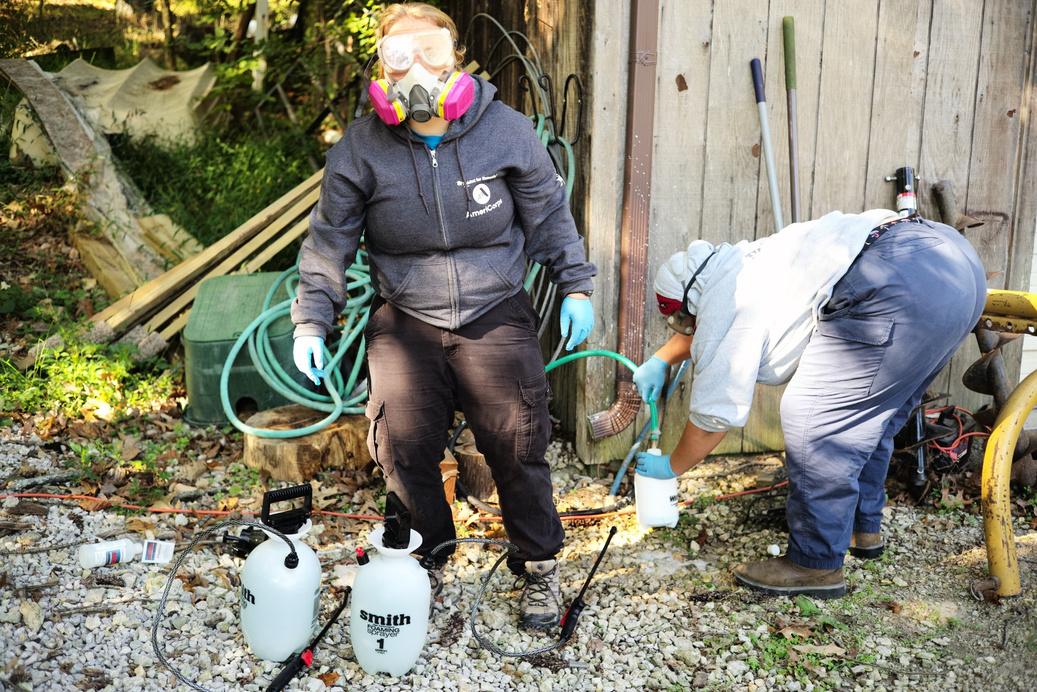
When disaster strikes, communities need immediate help. For many years, AmeriCorps has provided services in the wake of disasters, often the first to arrive and the last to leave. In many places, state and territorial service commissions deploy and organize AmeriCorps members and local volunteers on the ground in communities impacted by disasters, both natural and person-made.
“Deployed to the hardest-hit areas of the region, the young people of AmeriCorps trained, coordinated, and led hundreds of thousands of community and faith-based volunteers that did the back- and heart-breaking work of dredging the Gulf Coast. AmeriCorps members helped to save Mississippi” following Hurricane Katrina. —Haley Barbour, 63rd governor of Mississippi (2004-2012)
Commissions partner with local and state agencies, nonprofit organizations, and others to leverage the full power of AmeriCorps programs and members to support preparedness, response, recovery, and mitigation for disasters of all kinds, including floods, wildfires, hurricanes, tornadoes, earthquakes, public health emergencies, winter weather, heat waves, and more.
Many commissions are included in their states’ emergency management plans as the lead for volunteer and donations management during times of disaster. Others are responsible for coordinating disaster preparedness education programming for their state or providing communities with disaster preparedness information.

In 2019, America’s Service Commissions (ASC) conducted a survey gauge commission involvement in disaster services; 48 of 52 com participated. Some key findings from the survey include:

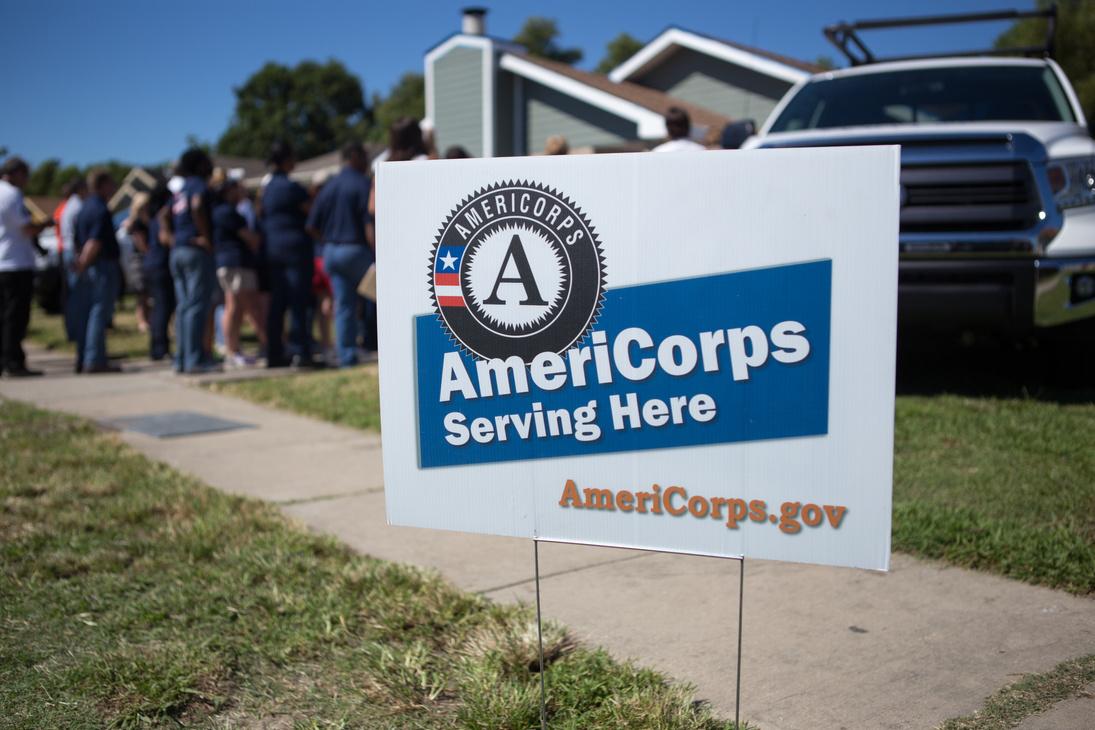
30 commissions already supported disaster services in some way; another 11 commissions indicated interest in future involvement in disaster services
26 commissions engaged in disaster planning and/or preparation
23 commissions employed at least one staff member with designated disaster-related responsibilities
25 commissions shared disaster training resources with grantees and/or partners

The following pages contain 13 case studies of disaster response that leveraged AmeriCorps and/or commission resources. We have included three well-known, historic examples — Hurricane Katrina in 2005, Hurricane Sandy in 2012, and Hurricane Harvey in 2017 — and 10 more recent examples, many of which you may never have heard of. We hope these stories will show the power of AmeriCorps and commissions to support communities facing disasters. Each case study contains two icons. One to indicate whether it is a historic or recent disaster, and one to indicate the type of disaster. (See the icon keys on the following page.)
Please view the additional resources section for next steps, helpful links, and a glossary, which defines terms and acronyms that may be unfamiliar to anyone not deeply versed in the lingo of disaster response.
“I became a total advocate of [national service] when I saw AmeriCorps come into New Jersey after [Hurricane] Sandy. These people did wonderful things, and these young people also lifted people’s spirits. [...] They came in with smiles, and they felt like they could change the world. And they did. They did change the world. There’s something really wonderful about that.”
—Chris Christie, 55th governor of New Jersey (2010–2018)On June 25, 2021, southeast Michigan received a large amount of rain that overflowed their water systems and led to extreme flooding of highways, affecting over 5,000 homes in several counties. This was quickly declared a state disaster and, subsequently, a FEMA disaster. The Michigan Community Service Commission (MCSC) responded to the Michigan Critical Incident Management System briefing from the state police and immediately began working with local nonprofit partners in southeast Michigan.

The impact on residents’ homes was substantial. Southeast Michigan is a culturally diverse area and contains the state’s most populous counties. In this area, there are many seniors who have lived in their homes for decades, families that culturally use their basements for cooking meals and having family gatherings, and residents living below the poverty level, so a disaster such as this is very difficult to overcome. This was compounded by the fact that most of these areas are not in a floodplain, so residents did not have flood insurance to cover the damage.
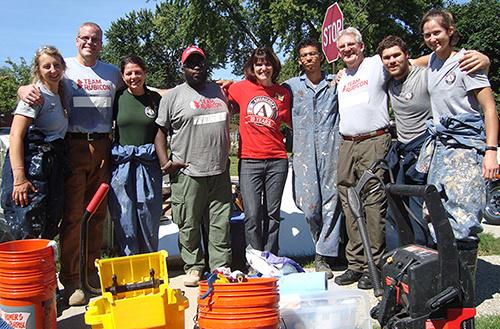
MCSC responded by assisting the city of Detroit and Michigan VOADS. In the city of Detroit, the MCSC made thousands of calls to residents and worked closely with 2-1-1 to document the cases and clarify the scope of work needed. For highrisk cases, MCSC worked in collaboration with FEMA and several nonprofit organizations to secure assistance with rental funds and repair/replacement costs for residents. MCSC supported seven long-term recovery groups and trained them to support homes that still need assistance. In addition, MCSC organized volunteers and helped ensure supplies for mold spraying and personal protective equipment (PPE) for volunteers and residents were available.
MCSC partnered with Wayne State University (WSU) and the Salvation Army to secure housing for volunteers and storage space for equipment. WSU social work students worked with FEMA to follow up with residents regarding additional support and assistance. Case management is ongoing in the affected areas with a goal to assist at least 10,000 of the most vulnerable survivors. The greatest needs continue to be flooded basements, mold remediation, and replacement of major appliances.
“I’ve lived in this home for 60 years and raised my kids here. My wife died a few years ago, and the kids live in different states. My home is all I have here. I can’t believe how nice [the volunteers] were to me. They did an amazing job cleaning everything up. I actually have hope that I’ll be okay here, and you helped me save my house.” —Local resident
sherryM2@michigan.gov
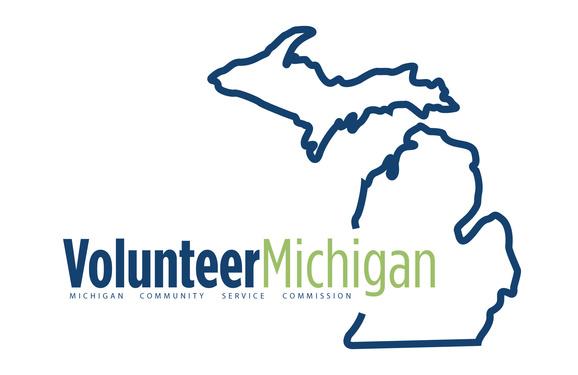
In March 2019, nearly two dozen communities in Nebraska flooded with water and had to be evacuated. Seventy-five cities, 65 counties, and four tribal areas issued emergency declarations. Highways were flooded cutting off access to communities. Bridges and roads were damaged and unpassable. Cattle and other farm animals were killed or stranded without food or shelter. Individuals needed to be rescued from their homes by the National Guard. Communities faced power outages, undrinkable water, and damaged homes, businesses, and farms.
ServeNebraska responded immediately by requesting AmeriCorps teams — including AmeriCorps NCCC, FEMA Corps, ADRT, and AmeriCorps St. Louis members — to mobilize to Nebraska to help the impacted communities respond to and recover from the flooding disaster. AmeriCorps members spearheaded operations for a VRC, supported survivors at MARCs, coordinated engagement and sign-ups, tracked inventory, submitted data to help FEMA provide future disaster support to the region, mucked and gutted damaged homes, removed trash and debris from homes, and helped expedite the rebuilding process for residents.
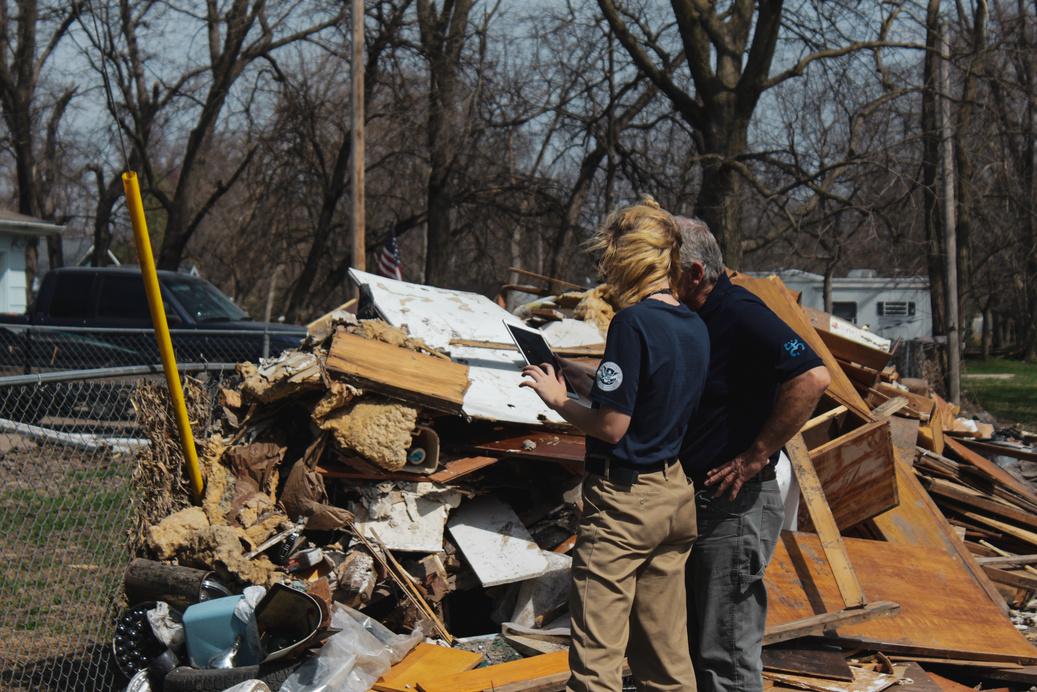
AmeriCorps members also collaborated with the Office of the Nebraska First Lady, United Way, the Nebraska Emergency Management Agency, the Nebraska VAL, Nebraska VOAD, Long Term Recovery Groups, the American Red Cross, FEMA, and various local governments of the impacted communities.
 By the Numbers
By the Numbers
7,316 hours served by AmeriCorps members

39 homes mucked/gutted
761 cubic yards of debris cleared
13,295 pounds of donations sorted and distributed
15,887 volunteer hours leveraged
585 survivors registered at MARCs
168 work orders generated
1,156 calls made to homeowners
cathleen.plager@nebraska.gov

“Disaster Survivor Assistance was a very humbling experience. Being able to see firsthand the damage and devastation that the floods had left behind was heart breaking. Many people had lost everything and were not able to go back to their homes. The one thing that did become apparent when talking to survivors was that the community of Nebraska is very strong. Neighbors would help neighbors even if they needed assistance themselves.” —Halie
Miyazawa, FEMA CorpsIn November 2018, a wildfire — the deadliest and most destructive in California to date — caused 85 fatalities and burned 153,336 acres, destroying 18,000 structures. Thousands of people were displaced, fleeing along crowded evacuation routes. At its fastest, the wildfire spread at more than a football field per second; it burned through 20,000 acres in less than 14 hours on the first day. The fire began on November 8 and was not fully contained until November 25.
Early in the response, California Volunteers was activated and tasked by the state’s emergency management agency to assist with volunteer and donations management needs. AmeriCorps State resources were quickly mobilized to support the response operations. Within weeks, the decision was made to call on national AmeriCorps resources, including NCCC and ADRT, to support Butte County through volunteer management, animal rescue, and staffing the call center. Many of the deployed AmeriCorps teams were embedded in the affected area for several months, supporting the community with ongoing capacity needs.
While several government and community agencies quickly began working to provide case management services to wildfire survivors, the need far exceeded the capacity of existing programs.

California Volunteers and the Governor’s Office of Emergency Services collaborated with local community groups to assess the needs of the survivors and created a unique solution to address gaps in essential services. California Volunteers invested $1.4 million in state and federal funds to support the AmeriCorps Disaster Case Management Corps. These state and federal resources were matched by $1.3 million in private funds from North Valley Foundation and $600,000 in local in-kind support from Butte County.
Administered by the Butte County Department of Employment and Social Services in partnership with the Camp Fire Long Term Recovery Group, and other community organizations, the AmeriCorps Disaster Case Management Corps engaged AmeriCorps members to support survivors in achieving their recovery goals by connecting them to stable housing, securing resources to replace lost belongings, helping them to access mental health services, etc.
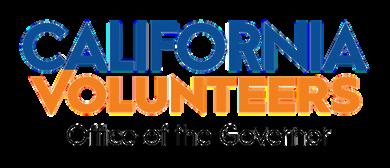 By the Numbers
By the Numbers
Zachary Corbo
zachary.corbo@cv.ca.gov
“I had a young single mom and her 18-month-old living in a trailer since the fire. [...] We were able to set her up with a 2-bedroom apartment for her and her son, along with furniture. [...] She tells me often how appreciative she is of what this program has done for her and how much her mental health and self-worth has improved.” —AmeriCorps member
Hurricane Ian made landfall on September 28, 2022, bringing significant wind damage and flooding to Southwest Florida. Flash flooding and storm surge generated by the storm’s relentless winds and rainfall produced widespread property damage in the areas of its path. Overall, 26 counties in Florida were impacted, and it became the third costliest disaster on record in the state.
Ian’s maximum sustained winds reached about 150 miles per hour when it made landfall in Florida as a category 5 hurricane, making it the fifth strongest storm ever to strike the United States.
Immediately, CERT programs throughout the state mobilized and began instantly responding to the devastation and immediate needs of their communities, spearheading operations like call centers, logistics, points of distribution, multi-agency warehouses, sheltering, search and rescue, and supplies. CERT programs collaborated with Volunteer Florida, the American Red Cross, the 7th Day Adventist, and various local governments of the impacted

Two CERT programs deployed outside of their jurisdiction to respond. Florida Region 1 CERT team provided food and assistance to over 6,800 Arcadia residents in five days. The team was also tasked with supporting base camp billeting check-in and check-outs and security patrols 24 hours a day for five days. In total, the Region 1 CERT team’s volunteer hours provided a value of $48,288 to DeSoto County Emergency Management.
The Ft. Lauderdale CERT team assisted at a multi-agency warehouse to help distribute goods and organize and inventory donated goods. The team also conducted community outreach to connect several groups and individuals affected by the storm, which resulted in several tons of goods being delivered to assist those most in need. This volunteer time is valued just shy of $50,000.
400 volunteers
9,500 volunteer hours


10 counties utilized CERT
50 deployed personnel
3,550 deployed personnel hours
19,000 calls fielded
christy@volunteerflorida.org
“I had a sense of satisfaction being able to do my part in assisting those affected by the storm. At the end of the day, we all need help sometimes. This time it was my turn to step up and help.” —Ricki Whitte, Ft. Lauderdale CERT
In August 2005, category 5 storm Hurricane Katrina made landfall in Louisiana, particularly impacting the New Orleans area; 80% of the city flooded. The storm and its aftermath resulted in nearly 1,400 deaths and caused $145.5 billion in damage. It is the costliest tropical cyclone on record in the United States.
Five years after Hurricane Katrina, more than one million volunteers had helped communities across the Gulf Coast come back stronger, safer, and healthier than before. This large-scale volunteer response wouldn’t have been possible without the support and leadership provided by the dedicated individuals who participate in AmeriCorps and AmeriCorps Seniors.
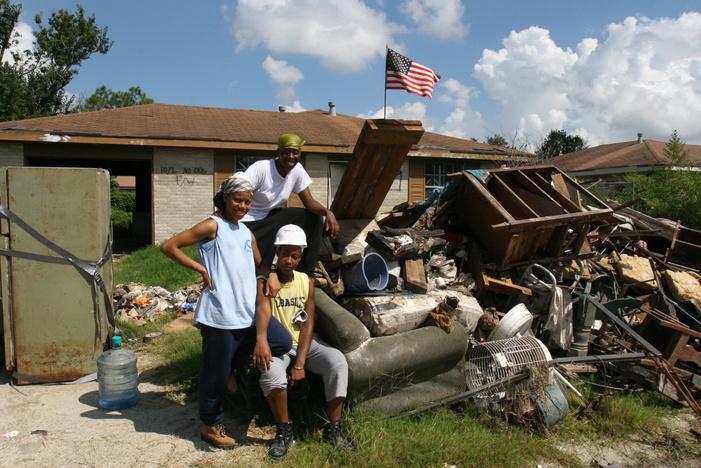
Working in cooperation with FEMA, state and local authorities, and hundreds of nonprofit groups, national service volunteers have directly contributed to the relief, recovery, and rebuilding effort, as well as coordinated additional community volunteers. National service participants have built or repaired homes, completed damage assessments, and supported emergency response centers.
110,000 national service volunteers

9.6 million hours served by national service volunteers
684,000 community volunteers coordinated by AmeriCorps
3 million people assisted
12,500 homes repaired or built
870 emergency response centers supported
On October 28, 2020, late-season Hurricane Zeta damaged over 30,000 homes in Mississippi, the majority of which were in Harrison County. Zeta was a category 3 hurricane with 115-mile-per-hour sustained winds. It is the latest hurricane on record to make landfall in the United States at such strength. Overall, Zeta caused $650 million worth of damage in Mississippi.
The Gulf Coast Hub activated a VRC to manage volunteers. The Gulf Coast Hub, along with Volunteer Mississippi and the Hub Network, issued a call for volunteers and AmeriCorps members to register with the VRC. In addition, the VRC organized long term recovery efforts through Habitat for Humanity, Back Bay Missions, and Catholic Charities. Volunteer Mississippi assisted in requesting AmeriCorps NCCC teams to respond.
By the Numbers1,565 requests for assistance from the public
1 AmeriCorps NCCC team deployed

20 previously unaffiliated volunteers recruited


Corie Jones
cjones@ihl.state.ms.us
The New Jersey Department of State responded to Hurricane Sandy immediately after landfall on October 29, 2012, and has continued to support recovery and preparedness efforts through its key divisions, including the Governor’s Office of Volunteerism. Hurricane Sandy caused nearly $70 billion in damage, decimating much of the New Jersey shore.
The Governor’s Office of Volunteerism responded to the huge outpouring of citizens who offered to help following the storm. In the first weeks, the office received over 15,000 calls, emails, and texts from NJ residents and volunteers across the nation. The Lieutenant Governor activated a 1-800-jersey-7 volunteer call-in number, met with Red Cross and AmeriCorps teams, and worked sideby-side with volunteers. The office worked in partnership with FEMA, New Jersey VOAD, Jersey Cares, the American Red Cross, the Salvation Army, Habitat for Humanity, Lions Club International, Rebuilding Together, and many other organizations which sent teams from across the country.
Over the next five years, more than 350,000 volunteers served in the recovery efforts. The office also deployed over 300 AmeriCorps members from all parts of the nation who came to help set up volunteer reception centers, assist with donations management, and gut and rebuild flooded homes.

The Office of Volunteerism and NJ VOAD also served as a source of information on how communities could accurately and effectively track volunteer hours, so that they could be accepted by FEMA as part of the “soft match” for communities that need to provide a percentage of match to meet their FEMA allocations.

As part of ongoing recovery efforts, the Governor’s Office on Volunteerism convened what has become known as the Volunteer Management Group. The group was composed of representatives from County Long-Term Recovery Groups, state agencies, community-based organizations, faith-based organizations, businesses as well as non-governmental organizations, and colleges. Members of the group participated in weekly conference calls to discuss imminent and emerging issues related to volunteer management. The group was kept apprised of issues and provided with vital information via email.
1 million volunteer hours
4 million meals provided
1,340 homes, nonprofits, and municipalities mucked/gutted
8,983 volunteers recruited

1,500 homes given “blue roofs”
6,329 individuals housed
“While I have seen help come in just about every form possible, I seriously doubt we would have made even a fraction of the progress we have made without the help of AmeriCorps...They exemplify experience and knowledge in each project they undertake, and I dare anyone to find them doing it without a smile.” —Joe Minnella, Ocean County resident
rowena.madden@sos.nj.gov
In August 2017, Hurricane Harvey — a category 4 storm — made landfall in Texas, causing catastrophic flooding. The second most costly storm in US history, Harvey inflicted $125 billion in damage and impacted 41 counties in Texas. Many areas received more than 40 inches of rain, and flooding displaced over 30,000 people.
OneStar staff served as the Federal Lead for the Volunteer and Donations Management taskforces at the FEMA Joint Field Office from October 2017 through August 2018. OneStar’s Disaster Services team supported the Texas Division of Emergency Management and FEMA in developing 29 long-term recovery nonprofits in impacted counties tasked with facilitating rebuild after the storm. OneStar also facilitated the rollout of the $100 million RebuildTX Fund to meet critical needs of Texas communities impacted by the storm.
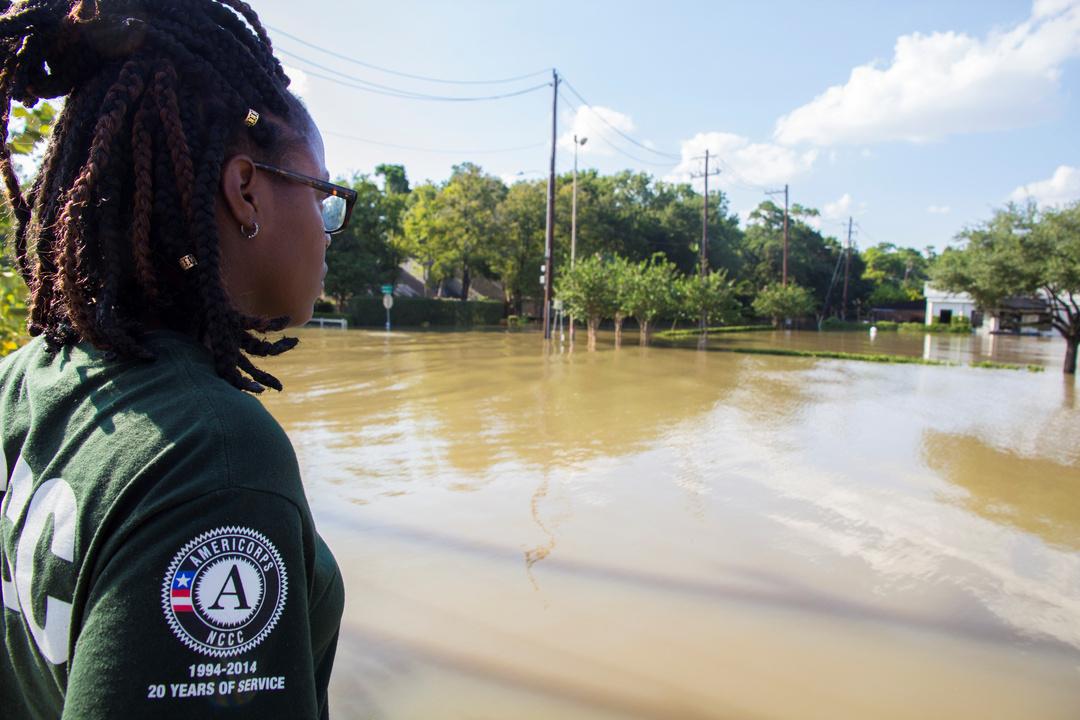
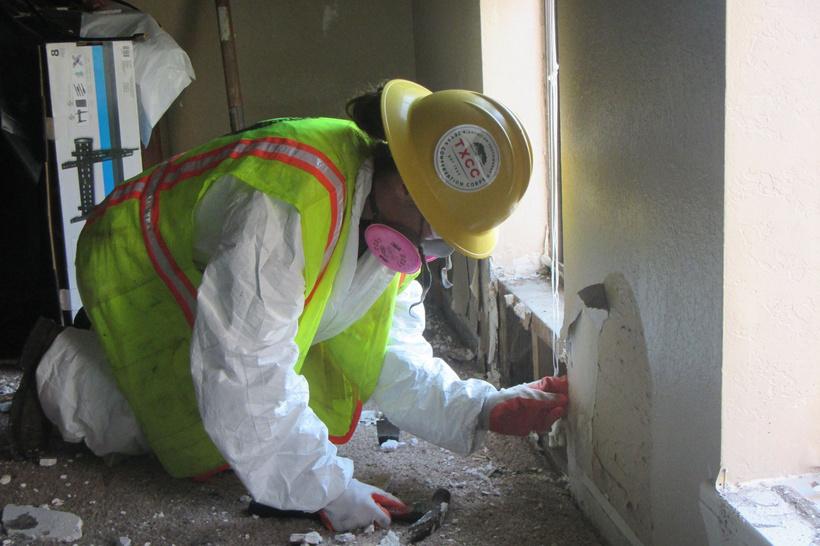
OneStar activated all AmeriCorps Texas programs (including non-disaster programs) in the days following Hurricane Harvey to provide surge capacity and operational continuity across the state. AmeriCorps members staffed and managed the State of Texas’s Crisis Cleanup Call Center; the only Spanishspeaking assistance hotline available following the storm, by leveraging multilingual AmeriCorps Texas members across the state to meet the needs of the non-English-speaking residents of Central and South Texas; the state’s Multi-Agency Donations Warehouse responsible for sorting, cataloging, repackaging and distributing all material donations received after the storm; and the Dallas Convention Center Mega Shelter in Dallas, Texas.



In addition, OneStar coordinated with the AmeriCorps agency’s Disaster Services Unit to bring in AmeriCorps NCCC and ADRT teams.
By the Numbers
2,000 AmeriCorps members
5,000 hours

In 2020 and 2021, Volunteer West Virginia organized a multi-pronged approach to respond to the COVID-19 public health emergency.

AmeriCorps members were deployed to collect food donations, deliver meals to at-risk families, serve school lunches, provide virtual tutoring and mentorship programs, make and deliver masks to first responders, distribute relevant information to community members, and much more.
Serving as the state’s CERT coordinator, Volunteer West Virginia organized CERT programs in Beckley, Clay, and Monongalia counties to assist with COVID-19 testing, vaccination, and public messaging. In addition, Volunteer West Virginia partnered with West Virginia VOAD to bring in two AmeriCorps NCCC teams to assist with COVID-19 vaccination in Kanawha, Wood, and Raleigh counties.
By the Numbers135,000 people vaccinated and/or tested
768 AmeriCorps members deployed 925,000+ pounds of food collected and/or distributed
2,064 volunteer hours by CERT teams
Disaster Services Contact Gina Namay
gina.l.namay@wv.gov

“It was rewarding to interact and connect with homeowners [during my] deployment. Disaster response brings you right into people’s homes and lives; it has an unavoidably personal nature.” —Olivia Sohn, AmeriCorps member
The Minnesota Department of Human Services (DHS) Resettlement Programs Office worked closely with community partners and other state agencies to coordinate Minnesota’s response in welcoming more than 1,200 evacuees from Afghanistan in early 2022.
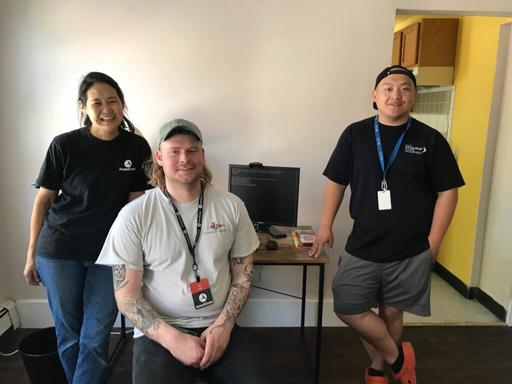
In partnership with DHS, ServeMinnesota and Ampact launched the Refugee Response Initiative to recruit, train, and place AmeriCorps members at the temporary housing site and throughout the community. Through this initiative, AmeriCorps members helped 500 Afghan evacuees find permanent housing, set up computers and other technology needs, offered tours of the neighborhood, assisted with finding jobs, and more.
Though the Refugee Response Initiative was at first planned to last for about six months, ServeMinnesota has extended it with Resettlement Corps, a year-long program once again in collaboration with Minnesota’s DHS. The AmeriCorps members of this program will help newcomers to Minnesota access housing, employment, legal orientation, education, and other resources.
“Many people I know and love came to the US as immigrants. I know it’s really, really hard to leave where you are comfortable. And it’s especially hard if you didn’t necessarily want to leave.” —Melody, AmeriCorps member
 Lisa Winkler
Lisa Winkler
On March 5, 2022, an EF-4 tornado hit Iowa and caused seven fatalities, according to preliminary reports. The supercell thunderstorm that produced the destructive tornado also produced damaging wind and hail events. According to the National Weather Service, this tornado was the first EF-4 tornado in Iowa since 2013 and was the second longest tornado path since 1980, with a path length of 69.5 miles. From the outset, Volunteer Iowa understood that this was a significant event that would need the commission’s skills and capabilities.
Working with Iowa Homeland Security and Emergency Management and other community partners in Winterset, Volunteer Iowa assessed the situation and what resources were going to be needed. Working out of Madison County, Volunteer Iowa assisted in opening a MARC and VRC at the Madison County Fair Grounds, which funneled hundreds of volunteers looking to help. Volunteer Iowa, along with its national service programs, provided support with field coordination and leadership, coordinated with non-governmental organizations, acted as a local community liaison and public information officer, and laid the groundwork for long term recovery in the Madison C community.
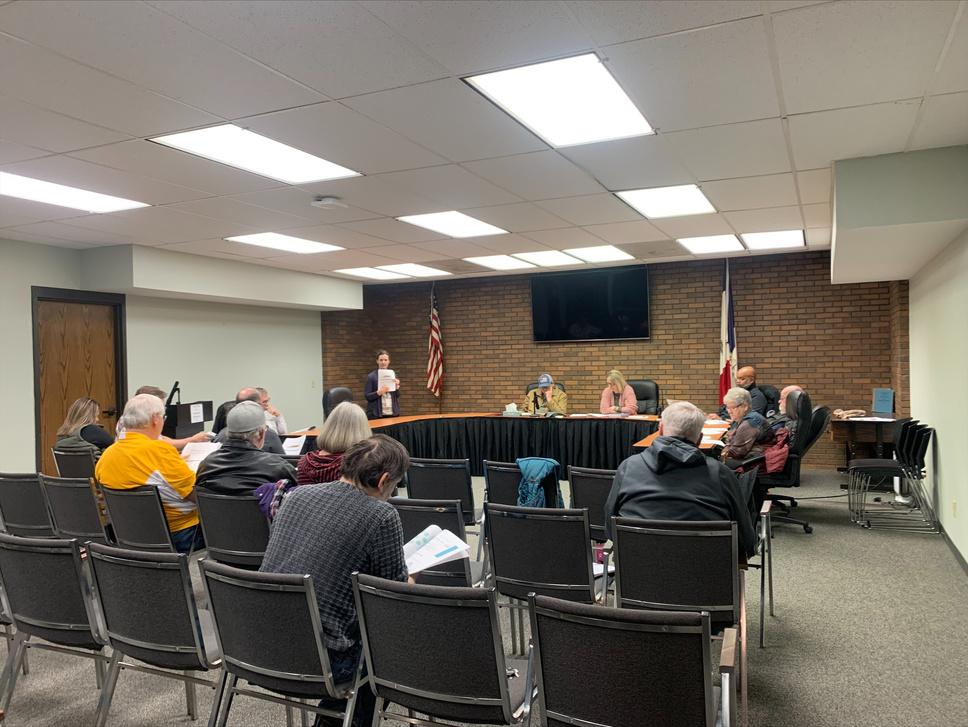
Volunteer Iowa utilized three national service programs including Habitat for Humanity of Iowa, Bur Oak Land Trust, and the Conservation Corps of Minnesota and Iowa to meet the needs of Madison County. There was an immediate need for volunteer coordination and field leadership that was filled by Volunteer Iowa’s Disaster Program Officer and its ADRTs. Over a thousand volunteers were able to be funneled and documented over the span of two weeks.
By the Numbers1,000+ volunteers engaged ~55 properties assisted ~10,000 volunteer hours
 Michael Rojas
Michael Rojas
michael.rojas@volunteeriowa.org
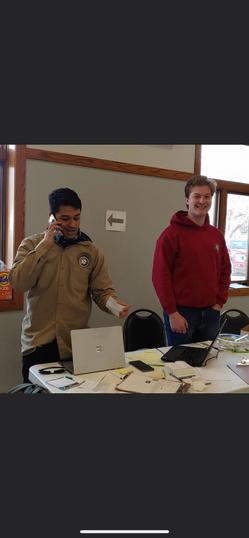

“I had a volunteer that every day I was there would bring me a piece of origami at the beginning of every morning and whisper to me, ‘Before things get hectic, I want you to have a piece of something to remind you that we appreciate you.’ By definition, the goal of origami is to transform a flat, square sheet of paper into a finished sculpture through folding techniques. Like disaster response, we try to transform, mold, and sculpt to create something that was not there before, but can be standalone and strong. It is all we can do when met with uncertainty and tough odds.” —Michael Rojas, Volunteer Iowa

On Saturday, June 12, 2022, severe weather in northeastern Kansas produced a tornado and high winds that struck the Marysville and Manhattan areas leaving behind structural damage and hazardous trees.

Tuttle Creek State Park on the north end of Manhattan was nearly reserved to its total capacity when the storm hit late on Saturday evening. Once the storm passed, it was obvious the park was in too hazardous a condition for camping or recreation. Immediately, park staff responded and began to help clear out park visitors. On Sunday morning, Tuttle Creek reached out to other parks knowing they would need help to clear the hazards and put the park back in a safe condition within a reasonable timeframe.
Park staff from across the state, including staff as far as Scott City, Kansas, loaded their equipment and headed for Manhattan. By Monday, additional park staff and AmeriCorps members from across the state were in Tuttle Creek State
AmeriCorps members who helped restore the park included members from Clinton State Park, Pomona State Park, Kanopolis State Park, and Tuttle Creek State Park. These members were willing and eager to spend several days in the park, clearing hazards and brush from fallen trees and assisting park staff with bringing the park back to a safe condition. With their help and the help of park staff, Tuttle Creek State Park has opened back up to the Manhattan community.
10 AmeriCorps members deployed
315 hours served by AmeriCorps members
1,200 campers impacted
450 acres damaged
7,000 cubic yards of debris cleared

“The biggest effect I saw from the storm was the strain it put on the staff members. The first two weeks were very stressful, and I’m grateful for all the staff, AmeriCorps members, and volunteers from other parks that showed up to help. We would have never been able to reopen in the short amount of time that we did if not for everyone’s help.” —Levi
Gantenbein, Tuttle Creek State Park managerDisaster Services Contact
Jessica Dorseyjdorsey@ksde.org

In partnership with St. Louis Winter Outreach, AmeriCorps St. Louis (ACSTL) — a program funded by the Missouri Community Service Commission — provides emergency shelter to the unhoused community when temperatures fall below 20 degrees. At these frigid temperatures, without a warm place to sleep, the St. Louis City unhoused population of around 1,300 faces life-threatening conditions. Each winter, AmeriCorps St. Louis is ready to open the doors of its Winter Warming Shelter to those in need. They provide a bed, two hot meals, bus tickets, showers, clothing, and hygiene items to approximately 40 guests each night.
During the 2021-2022 winter, ACSTL shelter staff, AmeriCorps members, and community volunteers supported shelter operations by preparing and serving meals; supervising and interacting with guests; sanitizing the facility; sorting and distributing donated clothing and hygiene items; transporting guests to shelters; and more. Partner organizations included: Back at You, City of St. Louis Homeless Services Division, Faultless / ImageFIRST, Purina, Places for People, and St. Louis Winter Outreach.
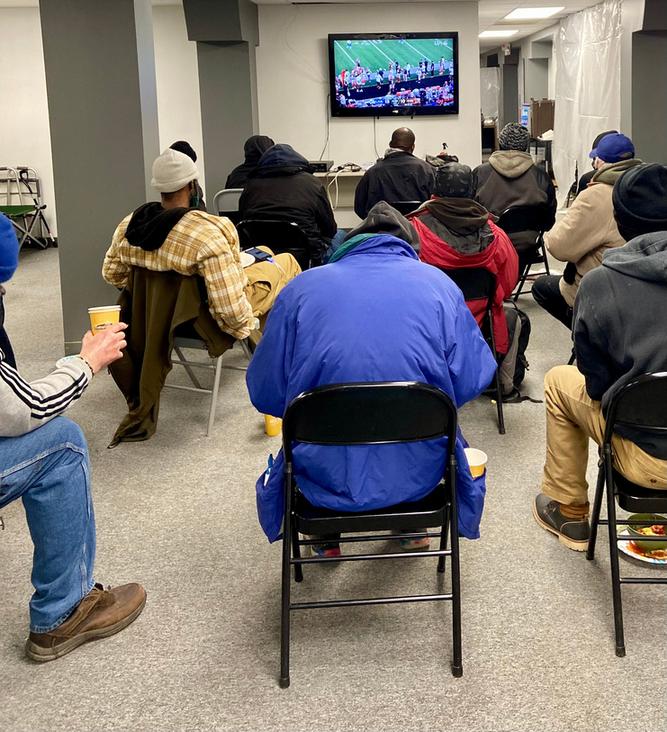
19 nights open for overnight shelter
222 individual guests served
740 total beds
1,248 bus passes distributed
1,567 meals served
675 community volunteer hours
271 AmeriCorps service hours


6,296 pounds of linens laundered
Contact
Brittany Crabtree-Stiffler
brittany.crabtree@ded.mo.gov
“It made me a bit nervous, never been completely homeless before! Different kinds of people and all that. The [shelter] staff were cool and laid-back, also friendly and attentive to my needs. I was able to get hooked up with a medical doctor, which was one thing that I really needed.” —Shelter guest

Hopefully this publication has inspired you to leverage the power of AmeriCorps and state/territorial service commissions to assist with disaster services in your state/territory. The following are our top five tips for getting started.
Don’t wait until disaster strikes. The best disaster response is one that has been prepared for in advance. Learn about the AmeriCorps agency’s approach to disaster services and the types of national service deployments. Connect with your state/territorial service commission. Reach out to your regional AmeriCorps NCCC campus. Sign up to receive disaster services updates from AmeriCorps.
California (2003–2011)
“Serving others is the greatest and most rewarding work we can do, and AmeriCorps provides fantastic opportunities to reach out a helping hand to those in need.” —Arnold Schwarzenegger, 38th governor of
AmeriCorps
AmeriCorps DSU
AmeriCorps NCCC
AmeriCorps Disaster Response Framework
Introduction to AmeriCorps Disaster Services online training
ASC
Chad Driscoll
State service commission contact information
Expanding Service Years in States and Local Communities
Innovative State Service COVID-19 Response Programs
The Value of State Service Commissions
FEMA
FEMA Disaster Response Framework
FEMA National Disaster Recovery Framework
FEMA National Incident Management System
ADRT — AmeriCorps Disaster Response Teams are AmeriCorps programs that have a heightened focus and commitment to disaster response and recovery. ADRTs engage in activities and trainings year-round, are a nationally deployable resource, and are recognized in the emergency management community as leaders in volunteer management.
AmeriCorps DSU — The federal AmeriCorps agency’s Disaster Services Unit leads the agency’s engagement across the disaster services cycle with federal, state, local, nonprofit, and other partners. The DSU’s role as the central hub for the agency’s disaster-related activities ensures that AmeriCorps engagement in this area is appropriate, consistent, and coordinated. The DSU also provides technical assistance before, during, and after a disaster. This includes but is not limited to national service roles and functions in the disaster cycle, accessing national service support, volunteer and donations management, disaster response and recovery planning, disaster partnership building, and training support.
AmeriCorps NCCC — AmeriCorps National Civilian Community Corps members range from ages 18-24 and serve in 10-month, team-based residential programs to complete a variety of projects in the areas of education, disaster services, the environment, and other unmet needs. NCCC has campus facilities in four regions — Pacific, North Central, Southwest, Southern — and teams are deployed within their respective region.
AmeriCorps Seniors — AmeriCorps Seniors pairs volunteers ages 55 and older with service opportunities in their local communities like tutoring students, delivering groceries, mentoring young people, responding to disasters, senior companionship, etc.
AmeriCorps State and National — Community organizations host AmeriCorps programs to meet critical local needs in the areas of education, disaster services, health, environmental stewardship, economic opportunity, and veterans and military families. AmeriCorps members are recruited, trained, and managed by the community organization to deliver the needed services.
CERT — The Community Emergency Response Team program educates volunteers about disaster preparedness for the hazards that may occur where they live. Volunteers are trained in advance to be able to respond to disasters in their communities before professional responders arrive.
EMAC — The Emergency Management Assistance Compact is an all hazards, all disciplines mutual aid agreement. EMAC members, which include all 50 states, DC, Puerto Rico, Guam, the US Virgin Islands, and the Northern Mariana Islands, can share resources to respond to governordeclared states of emergency.
EF Scale — The Enhanced Fujita Scale is used to assign a tornado a rating (from EF-0 to EF-5) based on estimated wind speeds and related damage. Higher numbers indicate stronger wind speeds.
FEMA — Since 1979, the Federal Emergency Management Agency has been the federal government’s lead agency in responding to and recovering from many of the nation’s greatest moments of crisis.
FEMA Corps — A partnership between FEMA and AmeriCorps NCCC, FEMA Corps members help communities prepare for and respond to disasters. Teams are deployed wherever the greatest need is. Projects include disaster survivor assistance, logistics, information systems, and public assistance.
MARC — Multi-Agency Resource Centers can be an efficient way to deliver services to individuals and families affected by a disaster by bringing together multiple service providers in a single location and providing onsite assistance.
State service commission — Created in 1993, state (and territorial) service commissions are partners of the federal AmeriCorps agency who administer AmeriCorps State, AmeriCorps Seniors, AmeriCorps VISTA, Volunteer Generation Fund, and related programs to address critical community needs and engage citizens in service. There are currently 52 state service commissions, operating in every state except South Dakota, as well as DC, Guam, and Puerto Rico.
VAL — The mission of Voluntary Agency Liaisons is to establish, foster, and maintain relationships among government, voluntary, faith-based, and community partners. Through these relationships, the VALs support the delivery of inclusive and equitable services and empower and strengthen capabilities of communities to address disaster-caused unmet needs.
VOAD — Voluntary Organizations Active in Disaster is a nonprofit, nonpartisan forum where organizations share knowledge and resources throughout the disaster cycle to help disaster survivors and their communities. The National VOAD has 50 national member organizations and 55 state and territory equivalents.
VRC — A Volunteer Reception Center is both a short and long-term solution for spontaneous disaster volunteer management. It serves to connect primarily spontaneous, unaffiliated volunteers with urgent volunteer needs in response to a disaster, but it is open to all organizations and all volunteers.

